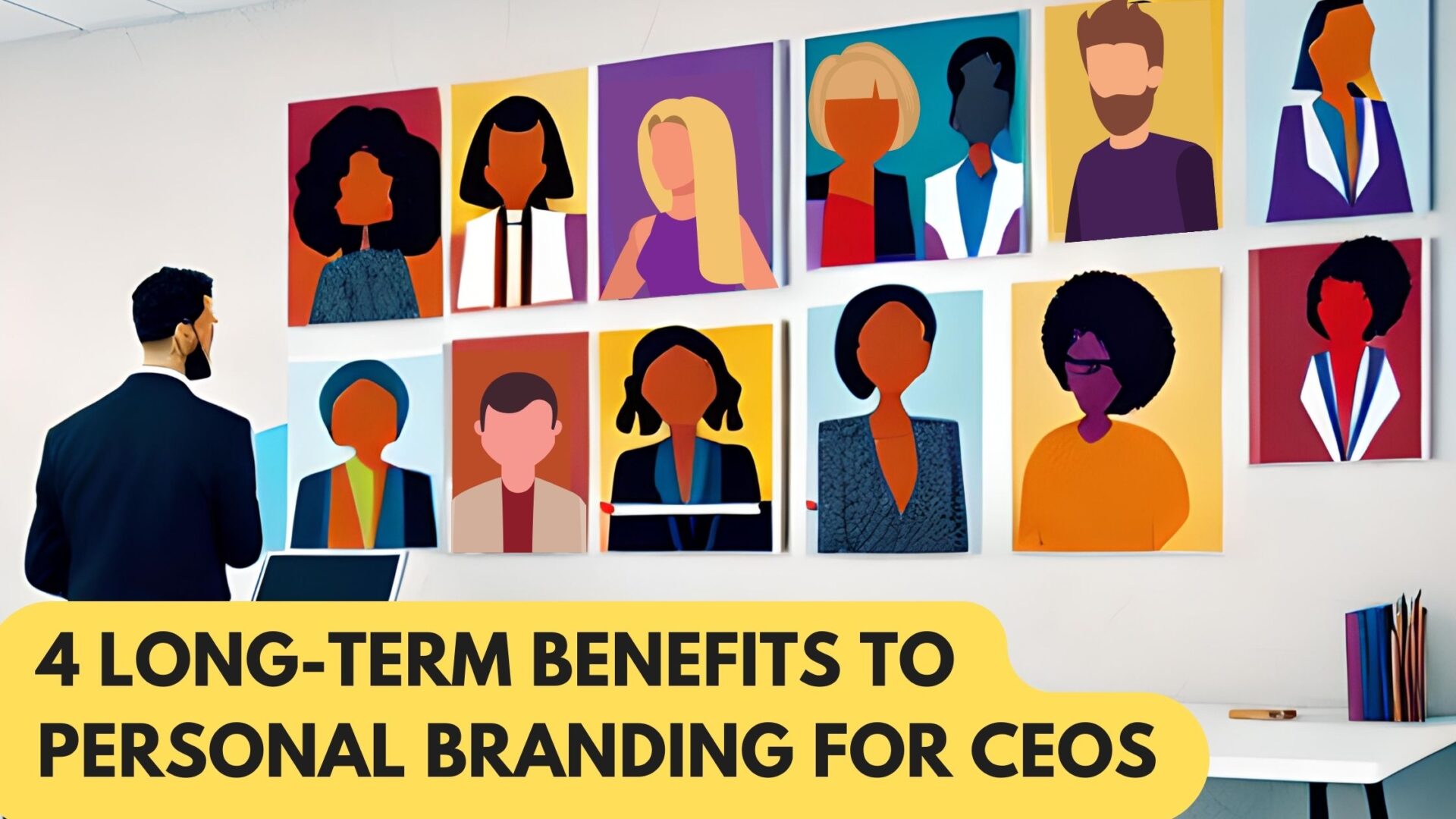A personal brand is not about posting what you had for lunch on social media.
Personal branding is not about spin. Or about bragging. Thank goodness.
Personal branding starts by recognizing you have a reputation and influence, and the power to leverage that influence to get people to move in a particular direction.
Savvy leaders understand that personal branding is about communicating who they are and what they are working towards – authentically and consistently through every means possible — to build momentum.
If you are a CEO, you know what I’m talking about. You’ve already seen the importance and value of creating a distinct brand for your business. That brand and what it represents are a key reason your customers choose you and stick with you.
And as CEO, you know who your important audiences are — investors, customers, prospects, employees, partners, and the media. These people matter. You want them to follow your lead, invest in your vision, feel passionate about the mission, successfully execute the plan, and hopefully, find satisfaction, and perhaps happiness, while they do it.
You want them to come, to follow, and to stay. So, you need to be communicating with them — all of them, all the time.
A powerful personal brand does just that and so much more. Consider these additional benefits:
Control the Narrative
You already have a brand. Even if you haven’t focused on branding, people have formed impressions and judgments about you — personally, not just about the company you lead. They see what you do and say, what others say about you, and just as importantly, what you don’t say — and they respond accordingly.
But without your intentional input and direction, the story is rarely 100% accurate.
You wouldn’t let outside people control the narrative about your business – why would you leave your own narrative to chance?
Doesn’t it make more sense to share your perspective and aspirations, motivations and goals, milestones, and even struggles, so that people form an accurate picture of what you’re doing and why?
Connect with Your People
When you build your personal brand intentionally, it becomes an asset. Your perspective, motivations, and goals not only clarify who you are, they also invite people to join you on the journey. Other people get excited about what you’re doing and want to be part of it.
As people better understand who you are, you attract more people who are a fit – customers, partners, investors, and employees. You also waste less time filtering out the people who are not a fit.
Build Credibility & Loyalty
With a powerful personal brand, people feel like they know who you are and what you stand for — before they meet you. In some ways, their relationship with you starts before they ever meet you.
As a result, they not only come to meetings better prepared, but you are able to build trust faster. All kinds of deals and agreements become easier to close.
And when you need to make decisions that aren’t popular, people will handle the news better. Because they feel like they understand the reasons — and the person — behind it.
Boost the Business
Simon Sinek was right when he said, “We don’t do business with companies. We do business with people. Business is always human.” Humans like to know the humans behind businesses. And they like to do business with companies that are run by people who are knowable and likable.
As CEO, you are the #1 human of your company. You may have other corporate spokespeople, but as the decision-maker and buck-stops-here person, you are it. Create a personal brand that serves the business in good times and hard times.
Multiple surveys have found that the CEO’s reputation has a huge impact on the business. A study by Weber Shandwick found that the CEO’s reputation accounts for 49% of the company’s reputation, and 60% of a company’s market value is attributed to its reputation.
Make Your Personal Brand Work for You
As I said earlier, you have a brand. It’s just a question of whether it’s helping you and your company get where you want to go — or not. Don’t waste your influence and don’t underestimate it either. There’s no better time than now to clarify and craft the story you want out there — and to use it to get to your goals faster.
If you’d like to talk about how to get started — or go further — contact me on LinkedIn, at [email protected], or book a quick call.

